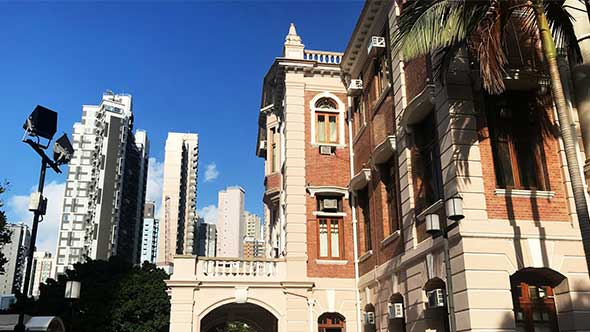| JHU IS Kira 面试速览 |
|---|
| 面试平台:Kira Talent 异步视频面试 |
| 题目构成:通常为 2 道口语题 + 1 道写作题(具体数量每年可能微调,以收到的邮件为准) |
| 口语题时间:准备时间 30-60 秒,回答时间 60-90 秒 |
| 写作题时间:准备时间 1-2 分钟,写作时间 5-10 分钟 |
| 核心考察点:沟通能力、逻辑思维、过往经历与项目的匹配度、职业规划清晰度 |
| 着装建议:Business Casual,上半身整洁专业即可 |
| 制胜法宝:提前准备 + 大量练习 + 自信微笑 |
“叮咚——”
深夜十二点半,小A的邮箱里弹出一封新邮件,标题是“Invitation to Interview with Johns Hopkins Carey Business School”。那一刻,她的心脏仿佛漏跳了一拍,激动地从床上弹了起来。JHU!梦校!信息系统(IS)项目!但当她点开邮件,看到“Kira Talent”这个词时,兴奋感瞬间被一丝慌乱取代。
Kira面试?这是个啥?对着一个不会动的摄像头自说自话?万一网络卡了怎么办?万一问到我完全没准备过的问题怎么办?小A脑子里瞬间闪过一万个“怎么办”,刚才的喜悦荡然无存,只剩下对着屏幕的焦虑。
相信我,小A的经历,就是每一个收到Kira面试邀请的你,最真实的写照。激动是真的,慌张也是真的。但别怕,今天这篇超长待机的“保姆级”攻略,就是来给你吃一颗定心丸的。我们会把JHU IS项目的Kira面试掰开揉碎了讲,从流程、题型,到每一个问题的回答思路,保证你看完之后,心里的石头能稳稳落地。
揭开Kira的神秘面纱:它到底想看你什么?
首先,咱们得搞明白,Kira它不是真人面试,它叫“异步视频面试”(Asynchronous Video Interview)。说白了,就是招生官提前录好问题,你对着摄像头在规定时间内录下你的回答。全程没有互动,没有追问,像一场自导自演的独角戏。
听起来是不是有点冷冰冰?没错。但也正因如此,它给了我们充足的准备空间。招生官通过这种形式,想考察的无非是这几点:
1. 你的英语沟通能力:你的发音、流利度、逻辑表达,能不能清晰地传达你的想法?
2. 你和项目的匹配度:你真的了解JHU IS这个项目吗?你的背景和职业规划跟它搭不搭?
3. 你的“软实力”:通过行为问题(Behavioral Questions),看你的团队协作能力、解决问题的能力、抗压能力等等。
根据近两年(2022-2024申请季)我们从各大论坛(比如一亩三分地、ChaseDream)收集到的上百份面经来看,JHU IS的Kira面试形式非常稳定。通常是2道口语题+1道写作题。口语题准备时间一般是30秒,回答时间是60秒或90秒。写作题则有大概5-10分钟的作答时间。
时间非常紧凑,几乎没有给你现场组织语言的机会。这意味着,所有的准备工作,都必须在点击“开始录制”之前完成。
第一道坎:万年不变的“Why JHU IS?”
这几乎是100%会出现的题目,无论是直接问“Why our program?”,还是变个花样问“What do you hope to gain from this program?”,核心都是一样的。这道题答不好,后面基本就凉了一半。很多同学的回答版本是:“因为JHU是世界名校,Carey商学院排名很高,IS项目前景很好……”
打住!这种空洞的吹捧,招生官一天能听到八百遍,毫无记忆点。正确的姿势是,把你的过去、现在和未来,与JHU IS项目紧紧地“捆绑”在一起。
公式:我的背景/经历 + JHU IS的具体资源 = 我的职业目标
听起来有点抽象?我们来拆解一下。
第一步:深挖自己的料。
你本科是CS,做过一个电商网站的开发实习。你发现自己对技术很在行,但总觉得做的东西缺了点“商业思维”,不知道怎么用技术去解决实际的商业痛点。这就是你的“痛点”和“动机”。
第二步:把JHU IS官网翻个底朝天。
别只看项目介绍首页。你要去看课程设置(Curriculum)、师资力量(Faculty)、学生俱乐部(Student Clubs),甚至是校友网络(Alumni Network)。找到2-3个最吸引你的“具体”的点。
比如,你在课程列表里看到了 “IS 620.730 - Business Process and Service Management” 这门课。太棒了!这不就是你欠缺的商业流程知识吗?再看授课教授,是Dr. Goker Aydin,他的研究方向是供应链管理和运营。这跟你之前做的电商项目不就联系起来了吗?
再比如,你看到Carey有“Innovation Factory”这样的实践项目,或者有专门的“Tech Club”。这些都是你能写进答案里的绝佳素材。
第三步:串联成一个有说服力的故事。
我们来看一个优秀的回答范例:
“My passion for Information Systems sparked during my internship at a retail tech startup, where I helped develop a recommendation algorithm. While I was confident in my coding skills, I realized I lacked the business acumen to truly understand how technology drives strategic decisions. That’s why I was immediately drawn to the JHU MSIS program.” (这里是你的动机来源)
“Specifically, I'm excited about courses like 'Business Process and Service Management' taught by Professor Goker Aydin, as his research in operations directly aligns with my interest in optimizing retail logistics. I believe this course will provide the framework I need. Additionally, I’m eager to apply these classroom learnings in a practical setting through the 'Innovation Factory' experiential learning project. I saw a past project that helped a local business digitize their inventory system, and that’s exactly the kind of real-world impact I want to make.” (这里是具体的课程和项目,展现了你的深入研究)
“My long-term goal is to become a Product Manager in the e-commerce sector. The blend of technical depth and business strategy at Carey is the perfect stepping stone to help me bridge my current skill gap and achieve this goal.” (这里是你的职业目标,与项目完美契合)
看出来了吗?这个回答没有一句废话,每一句都在展示“我做过功课”“我和你们项目是天作之合”。这才是招生官想听到的答案。
第二道坎:行为面试题(BQ)与STAR法则
除了Why Program,BQ题是另一大高频类别。这类问题通常以“Tell me about a time when…”开头,目的在于通过你过去的行为,来预测你未来的表现。
面对BQ题,千万不要只给一个干巴巴的结论,比如问你团队合作,你回答“我很有团队精神”。这毫无说服力。你必须讲一个故事,而讲好这个故事的黄金法则,就是STAR法则。
S (Situation): 事情发生的背景是什么?(一两句话讲清楚)
T (Task): 在这个背景下,你的任务或目标是什么?
A (Action): 你具体采取了哪些行动?(这是重点,要详细说)
R (Result): 你的行动带来了什么结果?(最好有量化数据)
下面我们用几道JHU IS面经里的高频BQ题,来实战演练一下。
高频题1:Tell me about a time you worked in a team and faced a conflict.
这是一个考察团队协作和解决冲突能力的经典题目。很多同学会下意识地把自己塑造成一个完美英雄,把锅甩给“猪队友”。这是大忌!招生官想看的是你的成熟度和处理问题的能力。
STAR范例:
S (Situation): “In my final year software engineering project, my team of four was tasked with developing a mobile app. We had a disagreement over which programming framework to use. Two of us preferred React Native for its cross-platform capabilities, while the other two, including our team lead, insisted on using Swift for better iOS native performance.”
T (Task): “Our progress was stalled, and my task was to help the team reach a consensus so we could move forward and meet our deadline.”
A (Action): “Instead of just arguing, I proposed a structured approach. First, I scheduled a special meeting and asked each side to prepare a short presentation with data, focusing on the pros and cons of their chosen framework in the context of our specific project requirements. During the meeting, I acted as a facilitator, ensuring everyone had a chance to speak. I created a decision matrix on the whiteboard, listing criteria like development speed, performance, and our team's skill set. We scored each framework against these criteria together.”
R (Result): “Through this data-driven discussion, we collectively decided that React Native was the more practical choice given our tight 3-month timeline. The process not only resolved the conflict but also established a more collaborative decision-making culture in our team. We ended up completing the project ahead of schedule and received an A grade. More importantly, I learned that facilitating open, evidence-based communication is key to navigating team disagreements.”
高频题2:Describe a time you had to learn a new technical skill quickly.
这道题考察你的学习能力和适应性,对于读IS这种技术日新月异的专业来说至关重要。
STAR范例:
S (Situation): “During my internship last summer, my team was starting a new data visualization project using Tableau, a software I had never used before. My manager needed a preliminary dashboard ready for a client presentation in just one week.”
T (Task): “My main task was to quickly master the basics of Tableau and build an interactive dashboard showcasing key sales metrics from a large dataset.”
A (Action): “I dedicated the first two days to intensive learning. I went through Tableau's official online tutorials, watched several YouTube crash courses, and practiced with sample datasets. When I encountered a specific problem with data filtering, I didn't hesitate to ask a senior data analyst on my team for a 15-minute coffee chat. He gave me some great tips and pointed me to a useful internal resource guide. I then spent the next three days cleaning the raw data, building the visualizations, and iterating on the design based on my manager's feedback.”
R (Result): “I successfully delivered the functional dashboard a day before the deadline. My manager was impressed with the speed and quality of my work and used it in the client presentation, which received positive feedback. This experience not only added Tableau to my skillset but also taught me a valuable process for rapidly acquiring new technical abilities under pressure.”
你需要提前准备3-5个这样的STAR故事,内容可以涵盖团队合作、领导力、解决问题、面对失败、学习新技能等不同方面。把它们写下来,反复练习,直到能流利地在60-90秒内讲完。这样无论Kira扔出什么BQ题,你都能从你的“故事库”里迅速找到一个匹配的来回答。
第三道坎:分秒必争的写作题
口语题之后,通常会有一道写作题。时间很短,一般是5-10分钟,写1-2段话。这部分考察的不是你的文采,而是你在压力下快速组织观点和清晰表达的能力。
题目类型五花八门,有的是关于科技趋势,有的是关于个人品质,还有的是脑洞题。
近年面经写作题库:
- “What is a technology that you think will have the biggest impact in the next five years?”
- “If you could give one piece of advice to your younger self, what would it be?”
- “Describe a time you received constructive feedback. How did you react?”
- “What does 'innovation' mean to you?”
应对策略:
1. 先构思,再下笔:拿到题目后,用30-60秒快速列个提纲。确定你的核心观点,以及支撑它的2-3个分论点。
2. 结构清晰:采用“总-分-总”的结构。第一句直接亮明观点。中间段落分别阐述你的分论点,最好能举个小例子。最后用一句话简单总结或升华一下。
3. 语言简洁:不要用复杂的长难句和华丽的辞藻。用简单、直接的语言把意思说清楚最重要。注意语法和拼写,这是专业度的体现。可以在考前用Grammarly之类的工具练习一下限时写作。
范例(题目:What does 'innovation' mean to you?):
(提纲:1. 创新不只是发明,更是改进。 2. 例子:智能手机的演变。 3. 创新需要同理心。)
“To me, innovation is not just about groundbreaking inventions, but more about the continuous process of meaningful improvement. It's about finding better, more efficient, or more user-friendly ways to solve existing problems.
A perfect example is the smartphone. The core concept wasn't new, but companies like Apple innovated by integrating a touch screen, an app ecosystem, and a sleek design, fundamentally changing how we communicate and access information. This shows that innovation often lies in creatively combining and refining existing ideas.
Ultimately, I believe true innovation is driven by empathy—a deep understanding of user needs. It's this human-centered approach to problem-solving that I find most inspiring and hope to practice in my future career in information systems.”
这个回答结构清晰,观点明确,还举了恰当的例子,在有限时间内完全足够了。
最后,但同样重要的:技术准备和心态调整
内容都准备好了,最后一步就是保证技术和心态不出岔子。
设备检查:提前用Kira平台提供的无限次练习机会,测试你的摄像头、麦克风和网络。确保万无一失。根据Kira官方数据,超过20%的技术问题是由于浏览器不兼容或网络不稳定造成的,所以一定要用Chrome或Firefox的最新版本,找个网速最好的地方。
环境布置:找一个安静、明亮、背景整洁的地方。一面白墙或者一个书架都很好。避免背后有人走来走去或者环境嘈杂。光线要充足,保证你的脸清晰可见。
着装和仪态:穿一件Business Casual的上衣,比如衬衫或者带领的T恤。坐姿端正,身体微微前倾,显得你很专注。回答问题时,眼睛看着摄像头,想象那里坐着招生官。记得全程保持微笑,自信的微笑是最好的加分项!
我知道,对着屏幕自言自语真的有点尬,甚至有点傻。但请你把它想象成一次跟未来教授和同学的提前会面,一次展示你独特闪光点的机会。你已经从成千上万的申请者中脱颖而出,拿到了这张面试的入场券,这本身就证明了你的优秀。
所以,在点击“开始”按钮前,深呼吸,告诉自己:我已经准备好了。把最真实、最自信、最热情的一面展现出来就够了。祝你好运,我们在巴尔的摩美丽的Harbor East校区等你!





